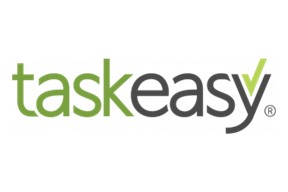The 100% bonus depreciation is back. It’s permanent. And it’s a big deal.
On July 4, 2025, Congress passed the One Big Beautiful Bill Act (OBBBA), officially restoring 100% bonus depreciation and making it a permanent part of the tax code.
The last few years were messy with phaseouts, deadline stress, and unclear timing rules. But now that Congress has made full bonus depreciation law again, the real opportunity is figuring out how to use it.
This isn’t about whether you qualify. If you’re buying the right kind of property today, you do. The focus now is on making sure you’re using the rule the right way, so you can benefit from it.
What It Means for You
When you buy a building, the IRS lets you depreciate it and spread the cost out over 27.5 or 39 years. That’s the default.
Bonus depreciation lets you accelerate the process. With a cost segregation study, you can break out parts of the building that wear out faster—flooring, parking lots, lighting, signage, appliances—and deduct them all in year one. If your property was placed into service after Jan. 19, 2025, and meets the criteria, you can deduct 100% of those short-life assets up-front.
That creates real tax savings. And now that the rule is permanent, you can build it into your strategy without worrying about sunset dates or phaseouts.
Put It to Work
Bonus depreciation isn’t just a tax break. It’s a tool to strengthen your cash position, improve returns, and create more flexibility in your business.
Here’s how you can use it:
Offset income from other deals. If you’ve sold a property this year or generated capital gains elsewhere, bonus depreciation gives you a way to reduce your taxable income.
Reduce your active income. If you or your spouse qualify as a real estate professional (REPS), these deductions can lower your W-2 income or other business income, not just passive real estate gains.
Improve your capital strategy. Big year-one deductions increase your cash position. That can help you cover renovation costs, delay a refinance, or reinvest in your next project without raising more equity.
Time your renovations intentionally. If you’re upgrading a property, placing those improvements in service after Jan. 19 means you may qualify for bonus depreciation, if they meet the criteria.
Common Mistakes to Avoid
This rule is simple, but it’s easy to miss the benefits by waiting too long or assuming it doesn’t apply.
Skipping cost segregation on smaller deals. Even on $600,000–$1.2 million properties, the math often works. You could unlock $50,000–$150,000 in deductions with a study that costs far less than that.
Assuming used property doesn’t qualify. It does. As long as you haven’t used the asset before, you can apply bonus depreciation on used acquisitions, including SFRs, small multifamily, and commercial condominiums.
Waiting until tax season to bring it up. If you wait until March to tell your CPA about a deal, they may not have time to plan around it. You want to model this in advance or at least flag it early.
Missing bonus-eligible improvements. Paving, site lighting, nonstructural buildouts—many common renovation expenses qualify. If you’re not tracking them properly, you could be missing valuable deductions.
A Quick Note for Lenders
If you’re financing a deal, bonus depreciation affects your borrower’s cash flow, which means it affects your loan. You can add value just by asking one question after closing: “Have you looked into cost segregation for this property?”
That conversation can lead to tens or hundreds of thousands of dollars in tax savings. That kind of savings improves reserves, strengthens DSCR, and reduces risk, without changing the loan terms. This isn’t about offering tax advice. It’s about helping your borrower keep more capital in the deal. And they’ll remember who brought it up.
A Real Example
A real estate investor purchased a $2.5 million retail center earlier this year. With cost segregation, they identified $680,000 in short-life assets such as parking areas, signage, HVAC units, site lighting, and landscaping.
Because the building was placed in service after the cutoff, and the contract was signed after that date, they were eligible for 100% bonus depreciation.
That one move resulted in roughly $238,000 in tax savings, which are funds they reinvested in tenant improvements and operating reserves without taking on new debt or selling equity. That’s the kind of impact bonus depreciation can have when you plan for it.
What to Do Next
Here’s how to make sure you’re not leaving money on the table:
Run a bonus depreciation estimate. Use a calculator to get a rough idea of what portion of your property might qualify.
Talk to your CPA now. Don’t wait until tax preparation. Give them a heads-up so they can factor this into your year-end strategy.
Work with a provider who understands your asset type. You want someone who can identify the right components without being overly aggressive or conservative.
Check your past deals. If you didn’t do cost segregation in a prior year, you may still be able to apply it retroactively using Form 3115. Ask your CPA.
You don’t have to master every detail of bonus depreciation to benefit from it. But you do need to take it seriously. The rule is permanent. That means you can build it into your planning, not just your filing.
If you own investment property or you’re about to, this is one of the cleanest, most powerful tools you have to improve your after-tax cash flow. All you have to do is use it.
























0 Comments